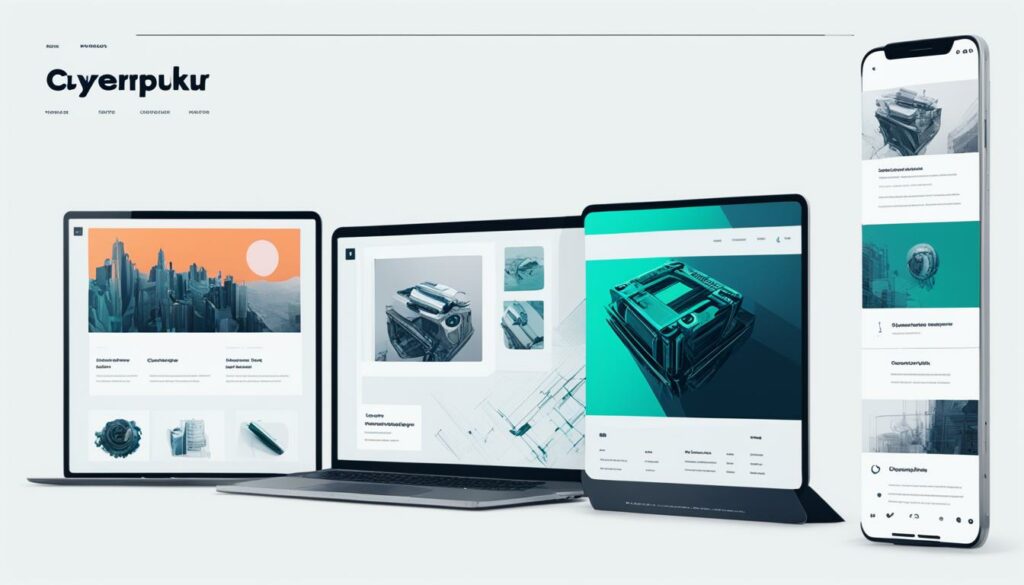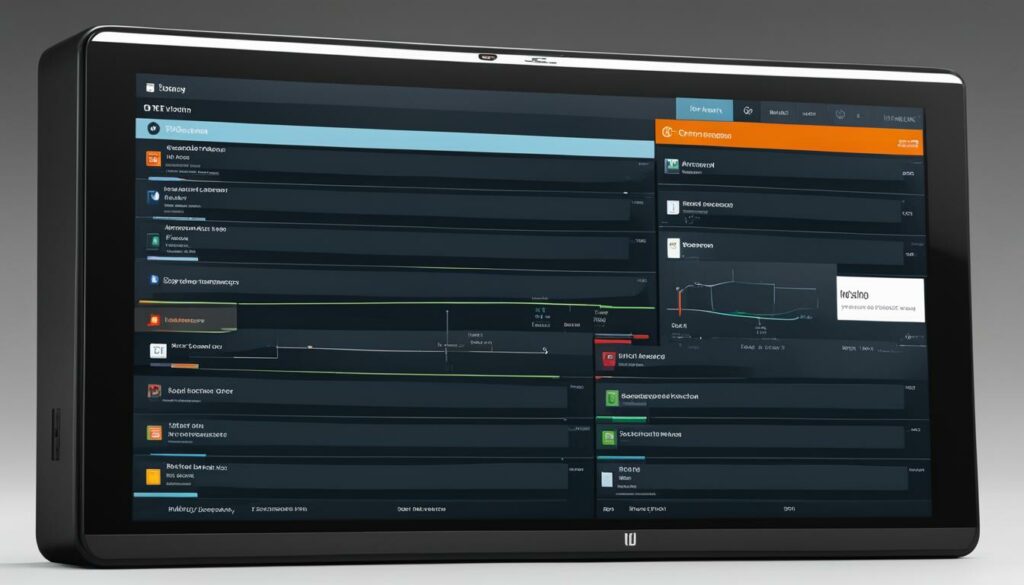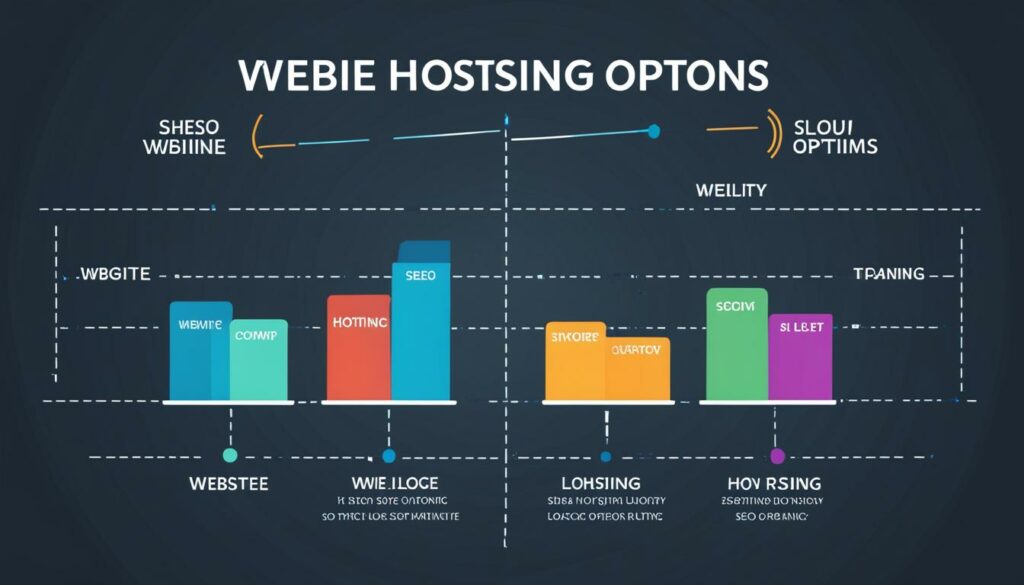Are you a creative professional looking to make your mark in the industry? Do you want to stand out from the competition and captivate potential clients with your skills? Then it’s time to ask yourself an important question: Have you created a portfolio website to showcase your work?
In today’s digital age, having a strong online presence is essential for professionals in various industries. Whether you’re a photographer, designer, developer, or artist, a portfolio website is your ticket to success. It serves as a powerful tool to highlight your projects, share case studies, and showcase your unique style. But why exactly do you need a portfolio website? And what are the essential elements that make it truly impactful? Let’s dive in and find out.
Key Takeaways:
- A portfolio website is a crucial tool for creative professionals to showcase their work and attract potential clients.
- It helps build trust, stand out from the competition, and ensure that others can easily find and remember you.
- Without a portfolio website, it can be challenging for potential clients to discover your talent and hire you for projects.
- Investing time and effort into creating a portfolio website is an investment in your career growth and success.
- Stay tuned as we explore why you need a portfolio website and the essential elements to make yours shine.
Why You Need a Portfolio Website
A portfolio website is essential for professionals in specific fields such as web design, web development, graphic design, marketing, and art. It allows you to showcase your work, stand out from the crowd, and build trust with potential clients.
Without a portfolio website, it can be challenging for potential clients to find and remember you. For example, when someone needs a logo designer, they typically start their search on platforms like Google. By having a portfolio website, you increase your chances of being found and chosen for projects.
Here are some reasons why a portfolio website is crucial for your professional success:
- Showcase Your Work: A portfolio website provides a dedicated space to display your best projects and demonstrate your skills and expertise. You can curate your work and present it in a visually appealing and organized manner. This gives potential clients a clear understanding of your capabilities and the quality of your work.
- Stand Out from the Crowd: In today’s competitive market, having a portfolio website helps you differentiate yourself from other professionals in your field. It allows you to showcase your unique style, creativity, and approach to work, helping you leave a lasting impression on potential clients.
- Build Trust: A portfolio website serves as a professional online presence where potential clients can learn more about you and your work. It establishes credibility and builds trust. By providing case studies, testimonials, and information about yourself, you reassure clients that you are reliable, experienced, and capable of delivering outstanding results.
“A portfolio website is like a visual resume that tells your professional story and convinces potential clients to choose you over your competitors.”
Creating a portfolio website not only enhances your online visibility but also strengthens your personal brand. It gives you control over how you present your work and allows you to shape the narrative around your abilities.
By having a professional portfolio website, you ensure that potential clients can easily find and remember you, greatly increasing your chances of being chosen for projects. It provides a platform to showcase your best work, demonstrate your skills and expertise, and give potential clients a glimpse of what they can expect if they decide to work with you.
Essential Elements for Your Portfolio Website
When creating your portfolio website, it’s important to include the following essential elements:
- Portfolio website templates: Start with a well-designed template that suits your style and industry. There are various portfolio website templates available online that can provide the foundation for your website’s layout and design.
- Online portfolio websites: Choose a platform that allows you to create an online portfolio easily. Platforms like WordPress, Wix, and Squarespace offer user-friendly interfaces and templates specifically designed for portfolio websites.
- Portfolio website ideas: Showcasing your work creatively is essential to capture the attention of potential clients. Consider unique navigation menus, interactive elements, and visually appealing graphics to make your portfolio website stand out.
- Compelling content: Provide detailed descriptions and context for each project or artwork you showcase. Highlight your skills, achievements, and the value you can bring to potential clients.
- Contact information: Make it easy for visitors to get in touch with you by including your contact details prominently on your website. This can include your email address, phone number, and links to your social media profiles.
By incorporating these essential elements into your portfolio website, you can create a visually appealing and effective platform to showcase your work and attract potential clients.
If you need inspiration for your portfolio website, take a look at some successful examples:
“A great portfolio website can do wonders for your career. It allows you to present your work in a professional and engaging manner, which can help you stand out from the competition. Here are some inspiring portfolio website examples to spark your creativity:”
| Designer | Website |
|---|---|
| Emily Davis | emilydavisdesign.com |
| Michael Thompson | michaelthompsonart.com |
| Grace Lee | graceleedesigns.com |
These portfolio website examples can inspire you with different design approaches and layouts that effectively showcase the work of talented professionals.

Best Platforms for Creating a Portfolio Website
When it comes to creating a portfolio website, choosing the right platform is key. You need a platform that offers user-friendly website builders, stunning design templates, and seamless integration with your desired features. Here are some of the best options available:
- Wix: Known for its user-friendly interface and drag-and-drop functionality, Wix is a popular choice among professionals looking to create a visually appealing website portfolio. With a wide range of stunning design templates and customizable features, you can easily showcase your work and create a unique online presence. Additionally, Wix offers advanced SEO tools, allowing your portfolio website to rank higher on search engine results pages (SERPs).
- Squarespace: Squarespace is another platform that offers a seamless website building experience. With its intuitive interface and modern design templates, creating a professional portfolio website becomes effortless. Squarespace also provides built-in analytics tools, allowing you to track the performance of your website and make data-driven decisions to further optimize your portfolio.
- Weebly: Weebly is a beginner-friendly platform that offers an intuitive website builder with drag-and-drop functionality. With its responsive design templates and robust e-commerce features, Weebly is suitable for professionals looking to not only showcase their work but also sell their products or services directly from their portfolio website.
These are just a few examples of portfolio website builders that can help you create a stunning and functional online showcase for your work. Remember to consider your specific needs, such as design flexibility, e-commerce capabilities, and SEO tools, when choosing the best platform for your portfolio website.
“A portfolio website is not just another website; it’s a carefully crafted representation of your skills, creativity, and professionalism. Choose a platform that aligns with your vision and empowers you to create an outstanding online portfolio.”
– Emily Johnson, Web Designer

| Website Builder | Pros | Cons |
|---|---|---|
| Wix | Intuitive interface and drag-and-drop functionality Wide range of stunning design templates Advanced SEO tools | Relatively higher pricing plans for advanced features |
| Squarespace | Seamless website building experience Modern design templates Built-in analytics tools | Limited design flexibility compared to other platforms |
| Weebly | Beginner-friendly with drag-and-drop functionality Responsive design templates E-commerce capabilities | Less versatility when it comes to customization options |
Conclusion
Creating a portfolio website is an essential step in establishing your online presence and attracting potential clients. By leveraging the right elements and platforms, you can design a professional and visually captivating portfolio website that effectively showcases your skills, expertise, and unique style.
Whether you’re a designer, photographer, writer, or any other creative professional, investing your time and effort into crafting a portfolio website is a valuable investment in your career growth and success. A well-designed portfolio website acts as a powerful tool to enhance your credibility, stand out from the competition, and leave a lasting impression on visitors.
When choosing a portfolio website builder, opt for a platform that suits your specific needs and offers customizable templates. Look for features that allow you to organize your work effectively, update it easily, and optimize your website for search engines. With a professional portfolio website, you can confidently showcase your work, build your brand, and attract the attention of potential clients all around the world.
FAQ
Q: Why is it important to have a portfolio website?
A: Having a portfolio website is crucial for professionals in various industries to showcase their work, attract potential clients, and stand out from the competition. It allows you to highlight your projects, case studies, and information about yourself, building trust and making it easy for others to find and remember you.
Q: Who needs a portfolio website?
A: Professionals in specific fields such as web design, web development, graphic design, marketing, and art can greatly benefit from having a portfolio website. It helps individuals in these industries showcase their work, stand out from the crowd, and build trust with potential clients.
Q: What are the essential elements for a portfolio website?
A: There are several essential elements to consider when creating a portfolio website. These include a visually appealing design, a clear and organized layout, a bio or about me section, a portfolio of your best work, contact information, testimonials or reviews, and social media integration.
Q: What platforms or tools can I use to create a portfolio website?
A: There are several popular platforms and tools available to create a portfolio website. Some of the best options include WordPress, Wix, Squarespace, Adobe Portfolio, and Behance. These platforms offer customizable templates, user-friendly interfaces, and various features to showcase your work effectively.
Q: Why should I invest time and effort into creating a portfolio website?
A: Creating a portfolio website is a crucial step in showcasing your work, building your online presence, and attracting potential clients. It allows you to communicate your skills, expertise, and unique style effectively. Investing in a portfolio website is an investment in your career growth and success as a creative professional.












